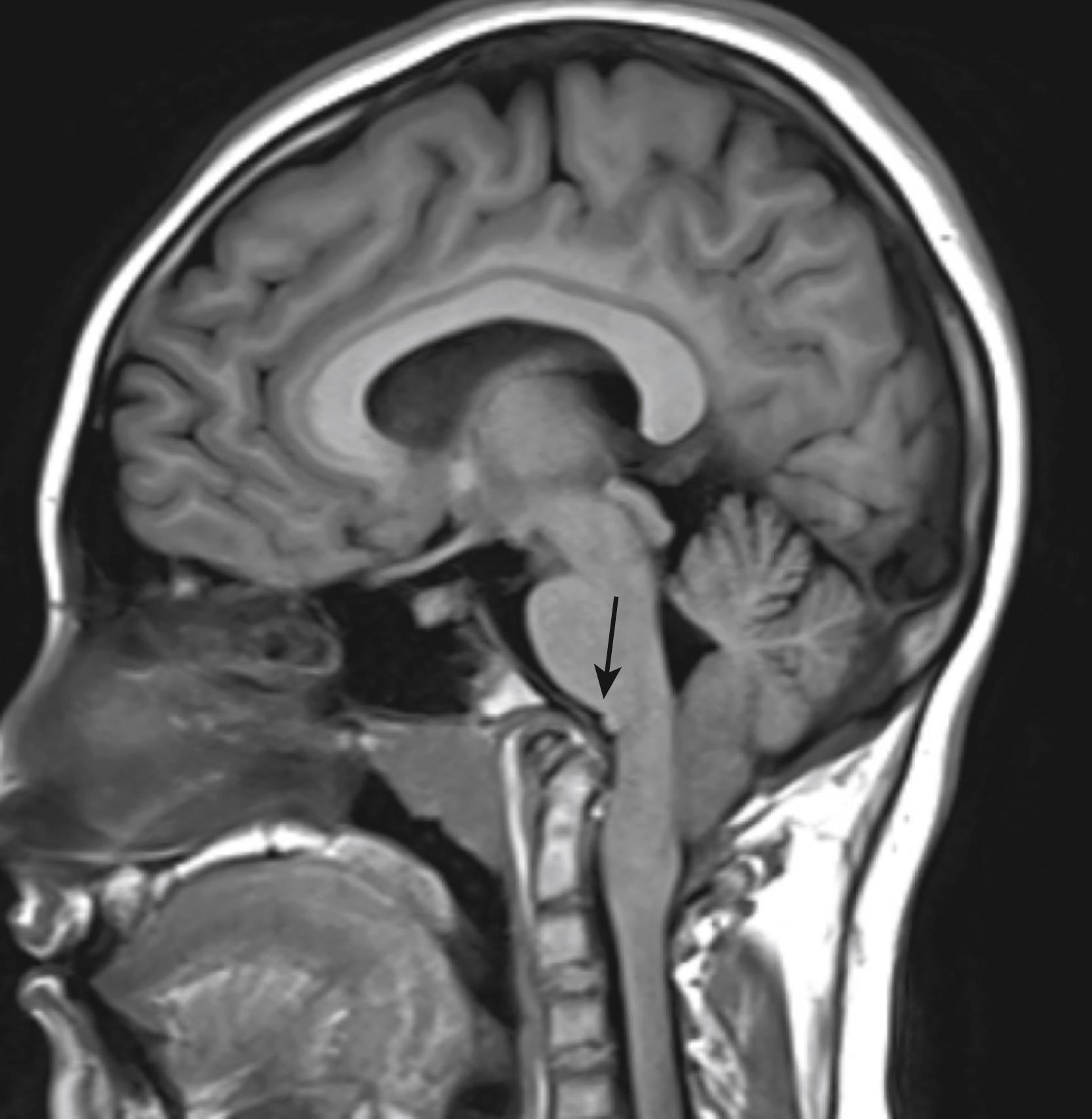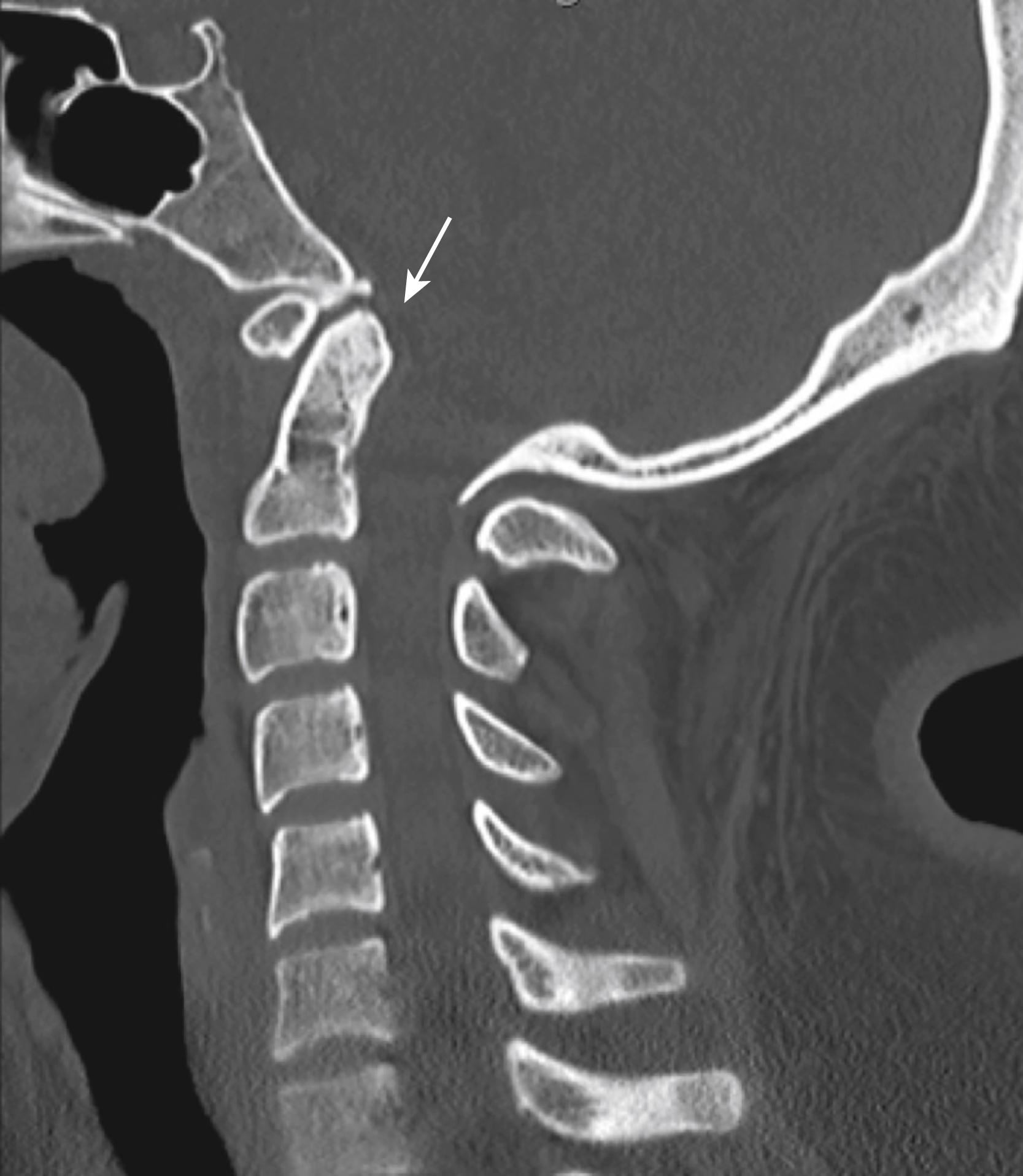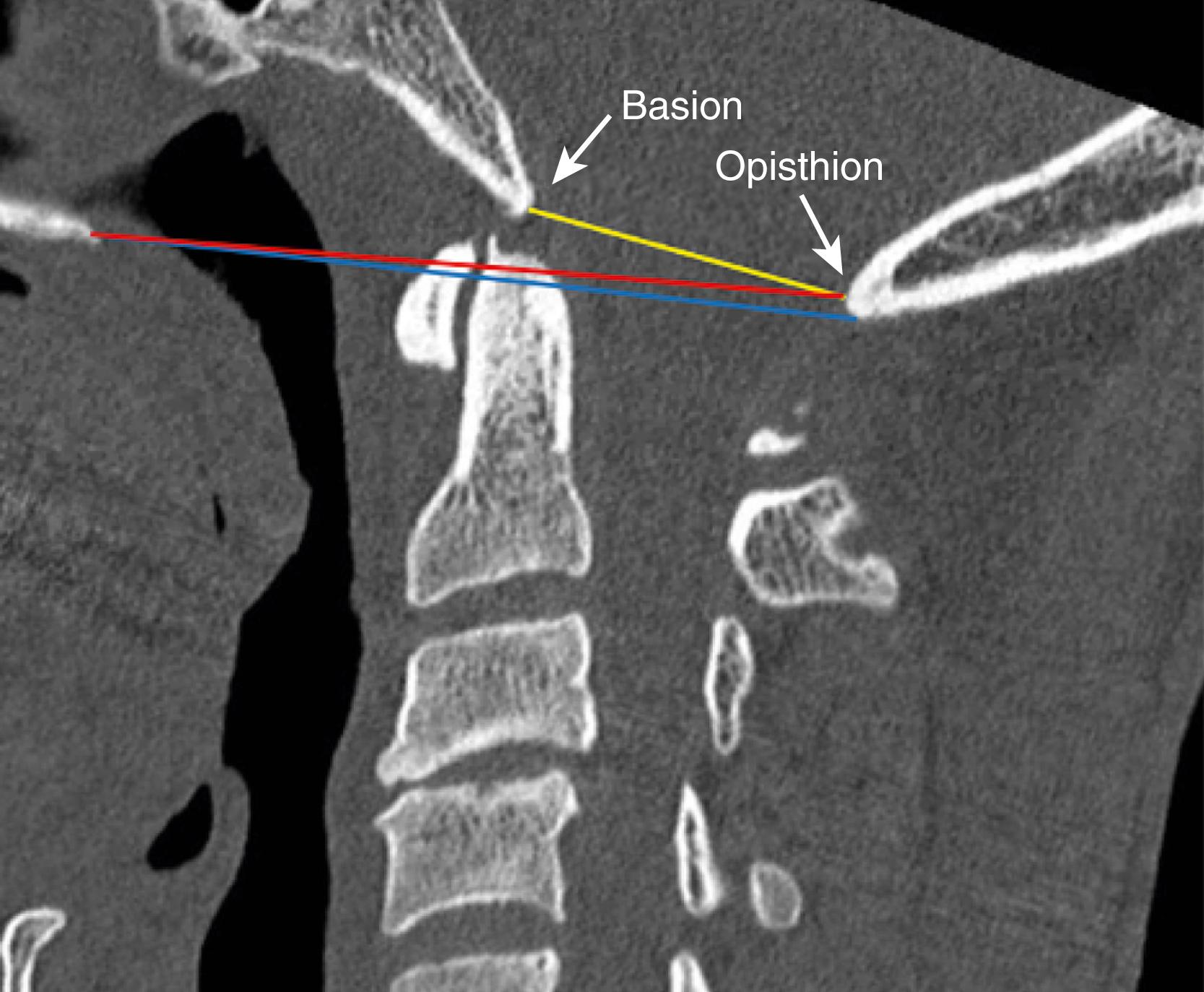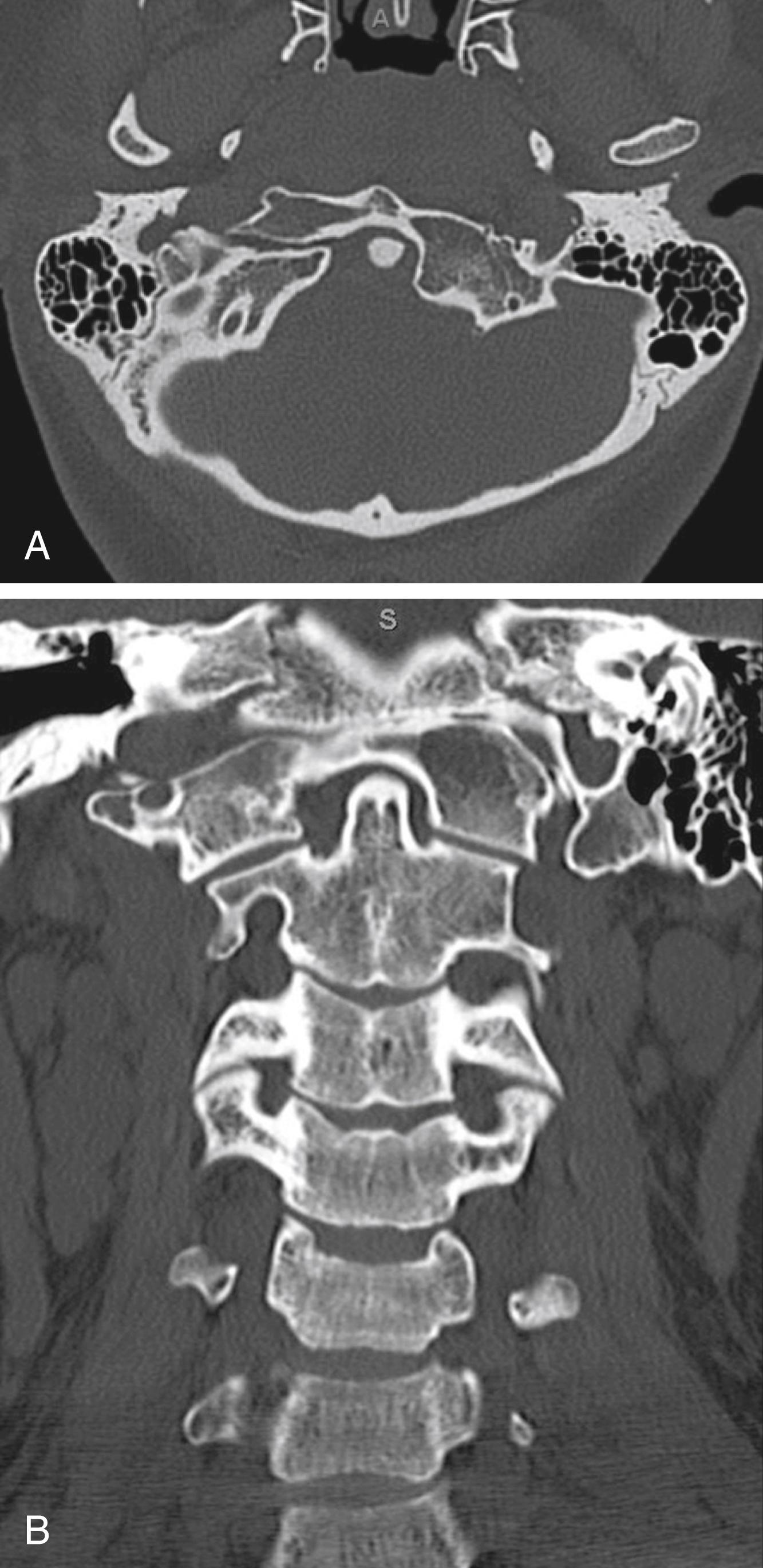Physical Address
304 North Cardinal St.
Dorchester Center, MA 02124
Congenital and developmental deformities in the cervical spine are rare but clinically relevant; failure to recognize a deformity can result in otherwise preventable neurological injury.
As a pediatric patient grows, the movement of the cervical spine changes with progressive caudal movement of the fulcrum of movement. As a result, the pattern of traumatic injury changes as children age.
Although basilar impression is most commonly asymptomatic, workup involves variable imaging modalities and utilizes McGregor’s, McRae’s, or Chamberlain’s lines.
Klippel–Feil syndrome involves congenital fusion of at least two cervical spine segments and can be associated with many other developmental anomalies that should be identified to prevent considerable morbidity.
Many congenital syndromes are associated with cervical spine deformities, including Jeune syndrome, Larsen syndrome, and Goldenhar syndrome.
Axis deformities are most commonly odontoid anomalies that can vary widely with regard to the biomechanical changes that can result.
Congenital and developmental deformities of the cervical spine are rare but clinically relevant. These can be discovered in a variety of ways, including perinatally, symptomatically, or incidentally later in life. When evaluating a pediatric patient, a congenital anomaly or deformity can often be mistaken for a traumatic injury, which can result in unnecessary procedures or treatments. Additionally, failure to recognize such a deformity can result in otherwise preventable neurological injury. As such, clinicians and surgeons must evaluate pediatric patients with a keen eye to identifying developmental deformities. Oftentimes these deformities can be associated with other conditions or health/organ abnormalities where early identification can be of benefit. Recognition of the spinal condition can clue the physician in to other laboratory or imaging tests that may be completed.
Understanding of normal cervical spine development and anatomy is the foundation for recognizing and treating developmental deformities. The first cervical vertebra is formed from three ossification centers (one body and two lateral masses). , Fusion of the posterior arches occurs by 3 to 4 years of age, while fusion of the lateral masses occurs by 7 years. , The development of the second cervical vertebra is more complex, as it has four primary ossification centers (one body, two neural arches, and one odontoid). The odontoid has two fetal ossification centers that tend to be fused by birth but can persist as dens bicornis. , The dens and the body fuse between 3 and 6 years (although this fusion line remains visible in ∼30% of the population), posterior arches fuse between 2 and 3 years, and the body-neural arches fuse between 3 and 6 years. , There are also two secondary ossification centers that appear at the tip of the dens and in the inferior ring apophysis. The tip of the dens center appears by 3 to 6 years and fuses by 12 years; nonunion here results in ossiculum terminale. The inferior apophyseal ring center appears during puberty and fuses by the mid-20s. , The other five cervical vertebrae have three primary ossification centers (one body and two neural arches, which fuse by 3–6 years and 2–3 years, respectively) and five secondary ossification centers (spinous process apex, superior and inferior epiphyseal ring, and anterior transverse processes; often these remain unfused until adulthood). , Depending on the anatomical site of development, the radiological presentation could involve the ossicles (accessory ossicle of the anterior arch of C1, persistent ossiculum terminale, os odontoideum, sesamoid ossicle of the nuchal ligament, or Oppenheimer ossicle), neural arches, transitional vertebrae (atlantooccipital assimilation, occipital vertebrae), vertebral body defects, and so on. The clinical presentation could result from neural compression from the medulla to the cervicothoracic junction.
As a pediatric patient grows and the synchondroses become progressively ossified, movement of the cervical spine changes. By the age of 7 to 8 years, the shape of the vertebral bodies has progressed from a wedge or oval shape to a more rectangular shape. , It is important to note that, because of the changing proportions of pediatric patients’ heads/bodies, the fulcrum of cervical movement progressively moves caudally as the child grows (beginning around C2‒C3 and ending around C5‒C6 by adolescence/young adulthood). This results in a greater level of cervical stability and a changing pattern of injury during trauma. A review of 227 traumatic pediatric cervical spine fractures found that the vast majority of cervical spine injuries in children younger than 8 years were at C3 or higher, whereas cervical injuries in children older than 8 years predominantly occurred below C4.
Some of the most common proximal cervical spine developmental anomalies include basilar impression (BI). Disorders that are commonly associated with this include atlas hypoplasia or bifid posterior arch, Klippel–Feil syndrome, occipitocervical synostosis, achondroplasia, Morquio syndrome, spondyloepiphyseal dysplasia, osteogenesis imperfecta, occipitoatlantal fusion, rickets, Paget disease, neurofibromatosis, skeletal dysplasias, and rheumatoid arthritis. , , BI involves the encroachment of the upper cervical spine (the odontoid top moving cephalad) toward the foramen magnum, compressing the brainstem/spinal cord. , This results in displacement of the base of the skull toward the cranial vault, causing neural compression, circulatory disturbances, and cerebrospinal fluid flow obstruction at the craniovertebral junction. BI can be either primary or secondary. Primary BI is more common and is congenital; secondary BI is developmental. Primary BI is associated with atlantooccipital fusion, hypoplasia of the atlas, bifid posterior arch of the atlas, odontoid abnormalities, Klippel–Feil syndrome, and Goldenhar syndrome, while secondary BI is reported with cases of osteogenesis imperfecta, Hajdu–Cheney syndrome, and other osteochondrodysplasias.
Most frequently BI is asymptomatic until the second or third decade of life; however, symptoms can present in approximately 15% of patients. , When patients are symptomatic, these symptoms can include headache, neck pain, or neurological compromise (85% of patients with symptoms have sensory or motor compromise). , Often a short neck is noted.
The workup for patients suspected of BI includes lateral upper cervical x-rays, computed tomography (CT) scan, and/or magnetic resonance imaging (MRI) or myelography ( Figs. 25.1 and 25.2 ). When evaluating with radiographs, utilization of Chamberlain’s, McRae’s, or McGregor’s lines can be helpful ( Fig. 25.3 ). This should not be confused with platybasia, which is depicted on lateral imaging as flattening of the angle formed by the intersection of the anterior cranial fossa floor and the axis of the clivus.



Treatment comprises of ventral neural decompression and reduction of the deformity, both depending upon the symptoms and the location of impingement (posterior vs. anterior). This can include fusion in extension, odontoid osteotomy with posterior fusion, and suboccipital craniectomy with C1 posterior ring removal and occipitocervical fusion.
Occipitocervical synostosis involves either complete or partial fusion of the atlas to the occiput ( Fig. 25.4 ). This likely is owing to failure of segmentation. The fusion more commonly involves the anterior portion of the atlas as opposed to the posterior elements. , Patients with this aberrant synostosis frequently have short necks, with restricted movement and low hairline. This is commonly seen in patients with achondroplasia, Larsen syndrome, Morquio syndrome, diastrophic dwarfism, or spondyloepiphyseal dysplasia. Other congenital anomalies that can be seen in conjunction with this include cleft palate, nasal cartilage clefting, external ear deformities, cervical ribs, and urinary tract anomalies/hypospadias. Atlantooccipital fusion results in BI/invagination in essentially all cases. Additionally, other cervical vertebrae fusions/nonsegmentations can be seen, as is the case for C2‒C3 in 70% of patients. The abnormal biomechanics result in atlantoaxial instability in about half of patients, and sudden death as a result has occurred. , , The risk of atlantoaxial instability is further compounded in cases of C2‒C3 nonsegmentation. When intervention is indicated based off neurological symptoms and instability, treatment includes cervical collars, traction, and/or occipitocervical fusion in extension to C2. , Craniectomy, laminectomy, and posterior dural band release can be included in cases where neural structure impingement is identified.

Become a Clinical Tree membership for Full access and enjoy Unlimited articles
If you are a member. Log in here